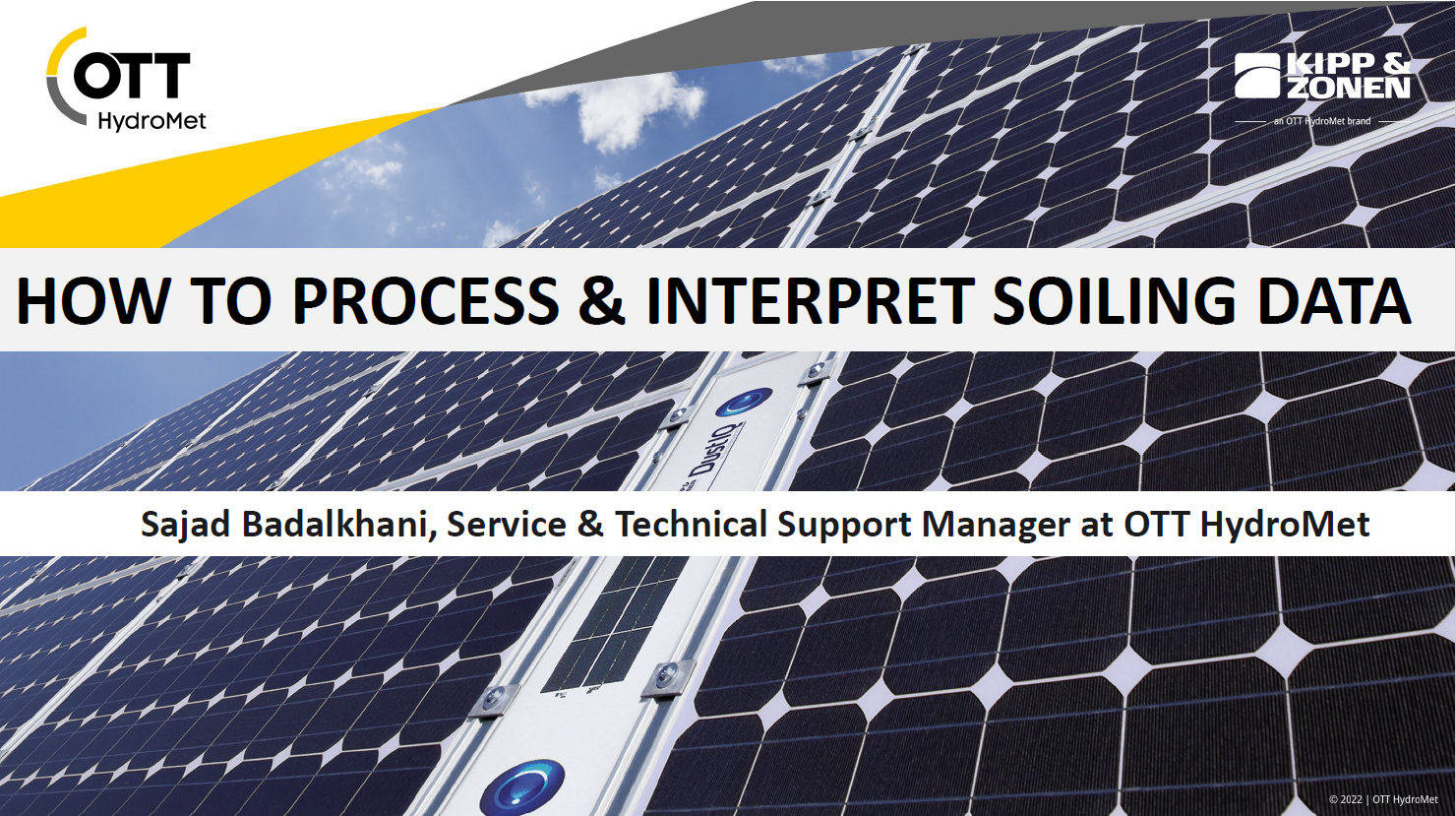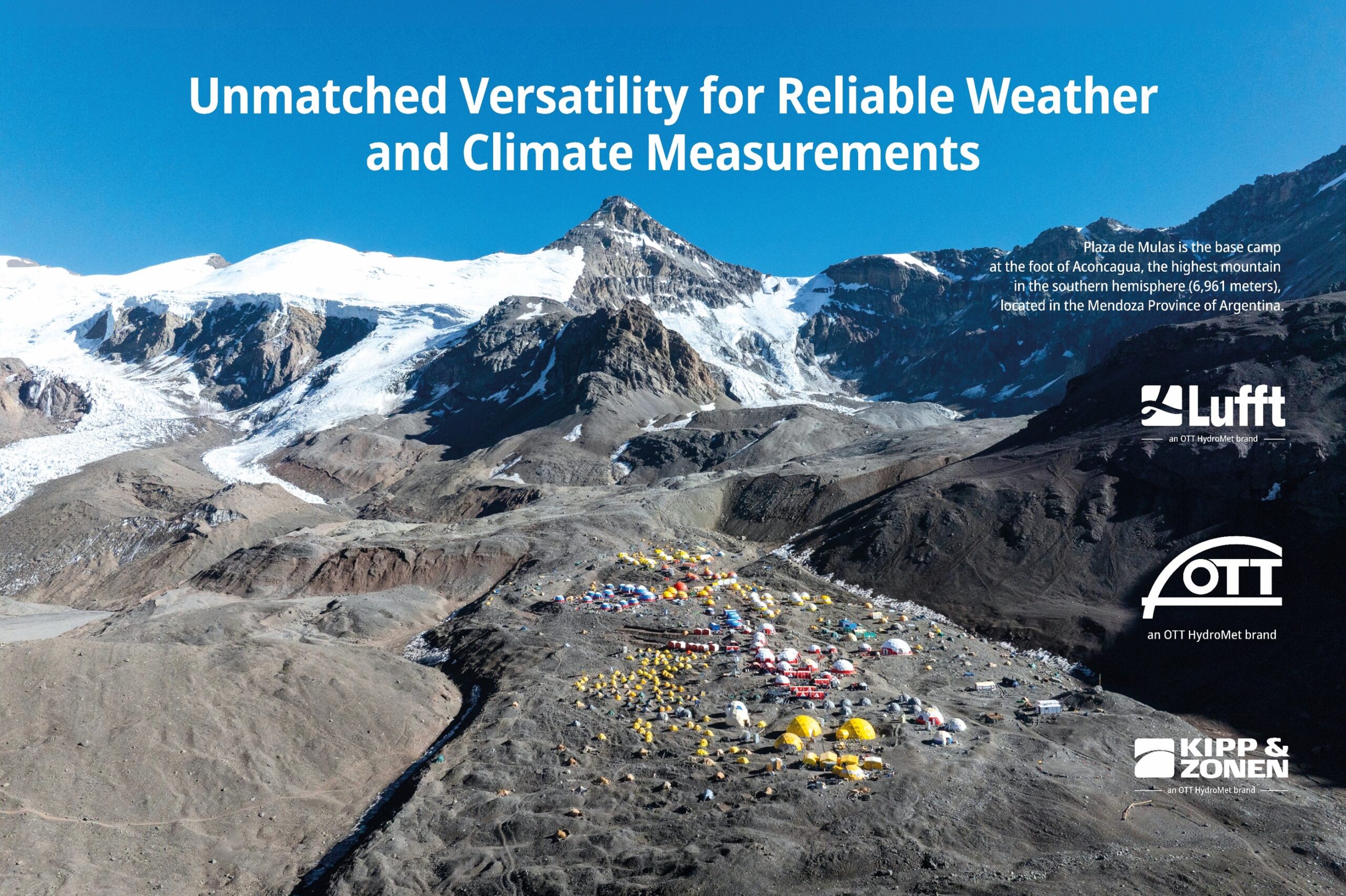PV modules perform best when they are clean. When contamination collects on the surface of modules, sunlight is blocked from reaching the PV cell, thus reducing the amount of electricity generated. This performance loss is described by the transmission loss and the soiling ratio.
The Kipp & Zonen DustIQ is a unique optical instrument for accurately measuring the soiling ratio of PV modules, providing information required to keep PV installations operating effectively.
In our recent webinar, Sajad Badalkhani, Service Manager Europe at OTT HydroMet, introduces the phenomenon of soiling and the measurement principles of the DustIQ. He also explains how to process and interpret the readings. Watch the recording below.
What is PV Soiling?
PV soiling is the accumulation of solid material on the surface of a PV module.
When dirt and particulate matter collect on a PV device, it both absorbs and scatters incident light. This has a major effect on energy yield. Alongside high temperatures, soiling is one of the primary causes of PV output degradation and is known to account for losses of three to four percent of global PV production.
PV soiling can result from many sources, including mineral dust, bird droppings, organic growth (such as lichen, fungi and mosses), pollen, engine exhaust and agricultural emissions. The rate at which these materials accumulate depends on many factors, including properties of the dust and PV module surfaces, as well as climate-related factors such as wind, rain, temperature, irradiance and humidity. PV module orientation can also have a significant effect. Interpreting and understanding regional soiling losses depends on careful consideration of all these factors.
The impact of soiling is generally described in two quantities:
- Soiling Ratio (SR): The ratio of the actual power output of a soiled PV array to the power output that would be expected if the array were clean.
- Transmission Loss (TL) or Soiling Level (SL): Fractional power loss due to soiling given by 1-SR.
For example, if a PV array were soiled to the point that it produced 5% less power than its clean state, the soiling ratio would be 95%, while the transmission loss would be 5%.1
There are two common methods for measuring the soiling ratio of a PV array.
One method is to set up two reference PV devices and allow one to soil naturally (at the same rate as the rest of the array) while keeping one clean. Despite being common, this method produces an instantaneous value of the soiling ratio, with uncertainties of the measurement, in particular, due to misalignment between the two reference devices and also due to the angle-dependence of scattering by soiling. This method also requires that one of the reference devices is perpetually cleaned.
The other method is to use an optical measurement device such as DustIQ. Optical systems work by producing an infrared light pulse from inside the module – i.e., from underneath the soiled surface – and measuring the portion that reflects and scatters back. Using a calibration constant, this measurement can then be converted into a soiling ratio measurement which is completely independent of the angle of incidence.
Ensuring Reliable Data Collection
There are several factors that have an influence on the reliability of soiling measurements.
Location and Number of Sensors
IC61724 sets out recommendations for the number of soiling sensors to be used for a given AC system size in megawatts1 However, this is something of a rule of thumb. It is possible to have significant variations in soiling profiles between sensors when following these recommendations, especially where there are variations in ground textures or wind speed and direction.
The best practice is always to observe the site and check if it can be divided into different “dust regions” – each of these regions should be monitored, ideally by a centrally located sensor.
Installation, Commissioning and Maintenance
DustIQ can be placed anywhere on an array – at the top, side or bottom of a PV module. However, we advise installing it vertically: soiling typically varies most in the vertical direction, so horizontal installation can be less effective at getting the full picture.
We also recommend investigating electrical protection. DustIQ is equipped with features to ensure it remains electrically protected in the field – however it is always a good idea to provide external protection as well.
Make sure to check and validate the Modbus input register values, to ensure a reliable commissioning process.
To best utilize your soiling data, it is essential to consider the following factors:
- Sampling frequency: Soiling is a slow phenomenon, so even sampling just once per day can provide useful results. However, we recommend sampling every 15 minutes for better insight.
- Environmental parameters: Local environments dictate soiling conditions, so having data on environmental parameters – such as weather – can provide a much better understanding of soiling.
- Local calibration: DustIQ is calibrated in the lab using a standard dust sample. The properties of dust and particulate matter can vary greatly – thus, DustIQ must also be locally calibrated at least once.
- Taring: “Taring” is the process of compensating for the zero offset of data. This should be carried out regularly to prevent drift over time – we recommend doing so each time your modules are cleaned.
Processing Data to Maximize Findings
Proper data handling is essential in order to optimize the utility of your DustIQ data. Follow these steps for easy-to-interpret data:
This means removing any data points which are unrealistic.
Working with solar noon values minimizes the effects of “daily transients” due to frost and dew and also minimizes the effects of angle-of-incidence variation throughout the day. We recommend selecting data gathered from 12-2 pm.
If your DustIQ is not routinely tared, it is essential to compensate for zero offset during data processing. Though it is best to tare data when cleaning is carried out, it is possible to address this even if you are not cleaning your PV modules by considering “environmental cleaning conditions.” Incorporating weather data enables you to tare soiling measurement data according to specific environmental factors.
Following these simple steps ensures you can convert any unclear noisy measurements into usable and simple-to-interpret soiling data, revealing trends and enabling efficient maintenance.
In 2022, we released a new DustIQ firmware update that simplifies local calibration and taring and improves the sensitivity of measurements.
To learn more about processing data from DustIQ, watch the webinar above or get in touch with our experts with any questions.



